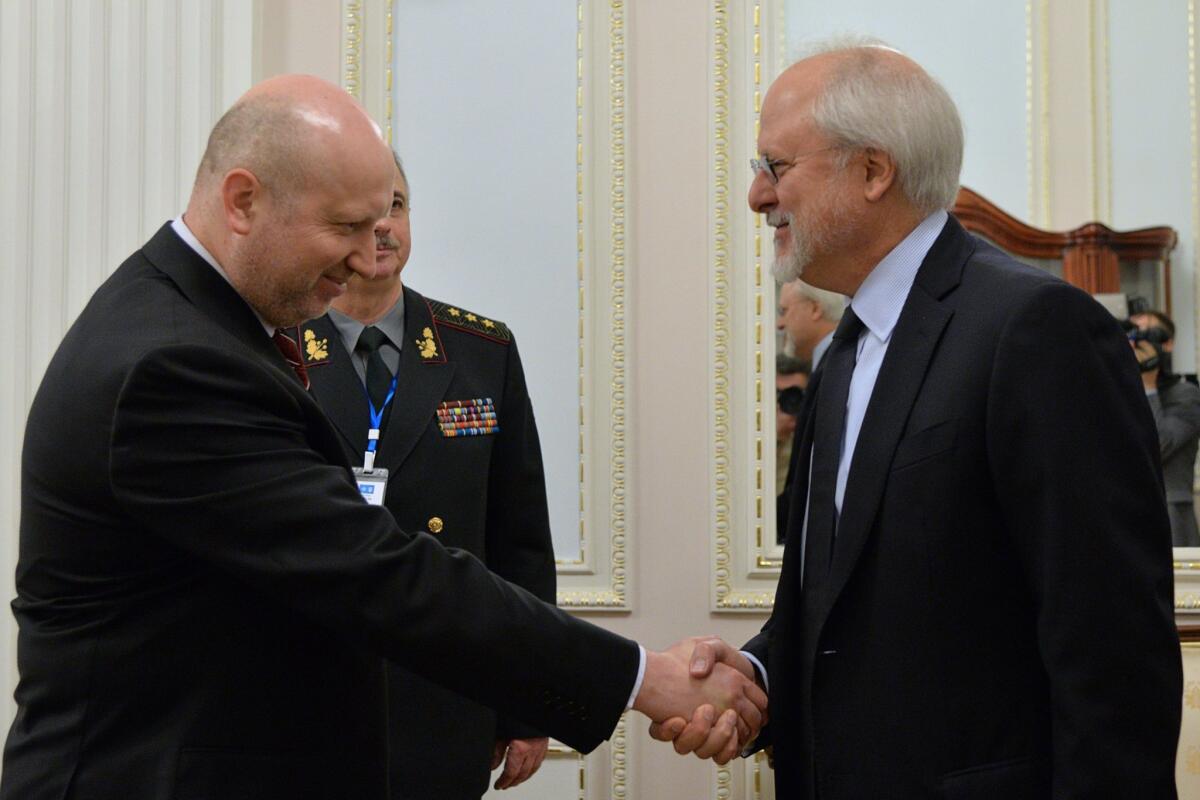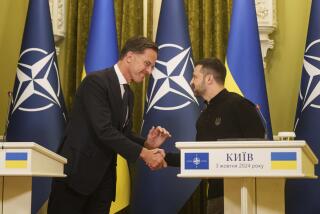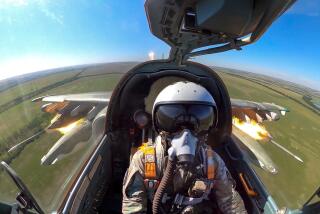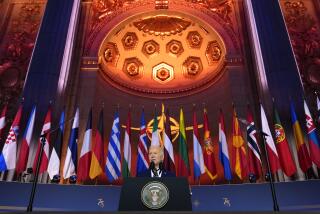NATO discusses membership path with Ukraine as fighting continues

Ukrainian National Security and Defence Council chief Oleksandr Turchynov, left, greets NATO security chief Thrasyvoulos Terry Stamatopoulos in Kiev on May 27.
At least nine people died over the last day in fighting that has flared in eastern Ukraine as both sides appear to be ignoring a cease-fire proclaimed more than three months ago, news reports from the embattled region said Wednesday.
One Ukrainian soldier was killed in the previous 24 hours, spokesman Andriy Lysenko of the National Security and Defense Council told reporters in Kiev at noon. Reports from the separatist-held areas of Donetsk and Luhansk said at least eight people, including six civilians, were killed in two bursts of shelling in the frontline town of Horlivka.
The stepped-up hostilities occurred as senior officials of the North Atlantic Treaty Organization held security talks with Ukrainian government officials in Kiev, the capital, on the former Soviet republic’s prospects for eventually joining the Western defense alliance.
“Ukraine is not ready [for membership in NATO]. Now there are more important priorities regarding the solving of the situation in the east and reforms in many areas,” Deputy Secretary-General Jamie Shea told reporters after meetings with Ukraine’s top security officials.
Before Ukraine can be integrated into the 28-nation defense alliance it must modernize its army and armaments, stabilize its economy to afford more defense investment and enact laws to combat corruption.
Ukrainian President Petro Poroshenko has said his nation probably would not meet NATO’s membership requirements before 2020.
But Shea said NATO officials recognize that “assistance to Ukraine is not just a moral obligation to help the country in its democratic challenges, but it is also in the security interests of all members of the alliance.”
It was the new Ukrainian leadership’s decision to align with the European Union and eventually NATO that triggered the Russian government’s seizure of Ukraine’s Crimea region 15 months ago and the separatist rebellion that has wrested the two eastern Ukrainian regions from Kiev’s control.
Ukraine’s former Kremlin-allied President Viktor Yanukovich was driven into Russian exile on Feb. 21, 2014, after a three-month rebellion by Ukrainians wanting closer relations with Western Europe instead of being tethered to Moscow’s economy and security forces.
Ukrainian officials and Western leaders accuse Russian President Vladimir Putin of fomenting the insurgency in the east and funneling in weapons and fighters in an attempt to destabilize the country drifting from Moscow’s traditional influence. The Kremlin denies it is involved in the Ukraine unrest, attributing the presence of Russians among the rebels to “volunteers” compelled to come to the aid of their Ukrainian brethren.
“We are well aware of the formidable challenges that Ukraine is facing,” NATO security chief Thrasyvoulos Terry Stamatopoulos told the meeting of defense and security officials in Kiev, according to the Ukrinform news agency. “It’s not easy to launch wide-ranging reforms while managing a major conflict and deterring continual attacks against your territorial integrity.”
United Nations relief officials estimate that 6,300 people have died in eastern Ukraine since the separatists seized the government seats of the Donetsk and Luhansk regions in April 2014. The Ukrainian government claims the death toll from 13 months of fighting is at least 8,600.
Follow @cjwilliamslat for the latest international news 24/7
More to Read
Sign up for Essential California
The most important California stories and recommendations in your inbox every morning.
You may occasionally receive promotional content from the Los Angeles Times.











